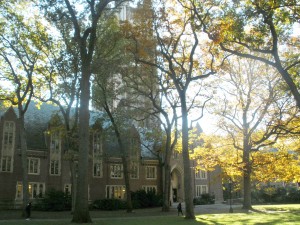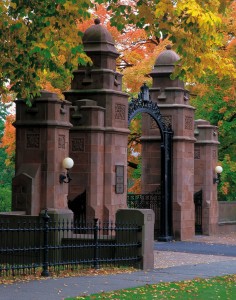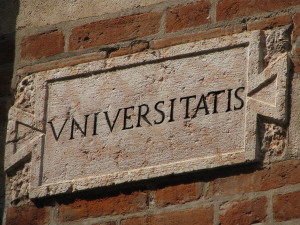Roots of the American University System
It is perhaps interesting to note that the oldest corporation in America is not a commercial business but Harvard College (Thelin, 2011). There are nine surviving colleges that were founded before 1781 and their heritage and prestige stem from their longevity (Thelin, 2011). These institutions include Harvard, William and Mary, Yale, Princeton, Columbia, Brown, Dartmouth, Rutgers, and Pennsylvania (Thelin, 2011). It is thought that one reason for the success of these institutions has to do with the attempt to transplant the Oxford-Cambridge ideal from Europe to the colonies; this seems to be a theory held even by the colleges themselves (Thelin, 2011). This ideal involves a merging of education, society, religion, and play to achieve an overall ‘lifestyle’ thought to be beneficial to developing young men (Thelin, 2011).
While it is true that the first colleges were intended to be based on the the European model, meaning state-funded institutions of higher learning, most of them failed and were replaced by church sponsored institutions in starting in the 1820s (Geiger, 2014). Contributing to the situation is the fact that America lacked a system of secondary education at this time (Geiger, 2014).
University Building
The mid 1800s brought two events that had a huge impact on higher education in America – the end of the civil war and the passage of the Morrill Act in 1862 (Thelin, 2011). The Morrill Act provided grants of federal land to the states for the purpose of establishing institutions of higher education (Thelin, 2011). Although the impact of this act on education was significant, it is also true that the federal government was motivated primarily by a desire to disperse land rather than promote education; the states were left to manage their institutions with little federal oversight (Thelin, 2011)
By 1880 there were few true universities in America with really only five existing at the time, but this was to change with the formation of the Association of American Universities in 1900 (Thelin, 2011). This brought about the emergence of true research institutions, where each discipline had a national society and publications that were open to qualified practitioners (Geiger, 2014). The wealth and energy of this period of growth produced rivalries and donors competing for the best universities (Thelin, 2011). When research funding first appeared in the 1920s this competition intensified (Geiger, 2014).
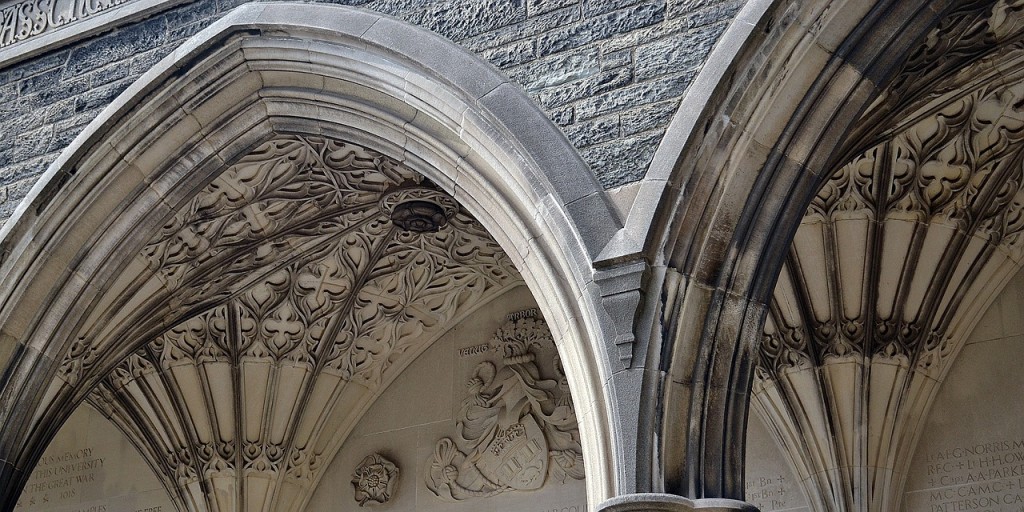 Mass higher education makes it appearance between 1920 and 1945 when enrollment in higher education increased fivefold, from 250,000 in 1920 to 1.43 million in 1945 (Thelin, 2011). This wave of campus building included stadiums and the emergence of the monumental campus (Thelin, 2011). It also ushered in the appearance of junior colleges, teachers colleges, and urban universities as the surge of new students continued to swell (Geiger, 2014). Women and minorities also appear in increasing numbers, although their acceptance by most colleges was restricted and both groups suffered significant discrimination during this period (Geiger, 2014). It was a time of intense growth and excess on campuses across the nation (Thelin, 2011).
Mass higher education makes it appearance between 1920 and 1945 when enrollment in higher education increased fivefold, from 250,000 in 1920 to 1.43 million in 1945 (Thelin, 2011). This wave of campus building included stadiums and the emergence of the monumental campus (Thelin, 2011). It also ushered in the appearance of junior colleges, teachers colleges, and urban universities as the surge of new students continued to swell (Geiger, 2014). Women and minorities also appear in increasing numbers, although their acceptance by most colleges was restricted and both groups suffered significant discrimination during this period (Geiger, 2014). It was a time of intense growth and excess on campuses across the nation (Thelin, 2011).
Following World War II, from 1945 to 1970, higher education in America was in the midst of its Golden Age, a period of prosperity, prestige and popularity (Thelin, 2011). Growth in universities included not only increased enrollment, as the number of students continued to rise, but also an increase in the scope and quality of educational programs, primarily advanced academically selective programs (Thelin, 2011). Although enrollment had been at nearly 1.5 million prior to WWII, and dipped slightly during the war, it rose to 2.7 million by 1950, 3.6 million in 1960, and 7.9 million by 1970 (Thelin, 2011).
Troubling Developments in Higher Education
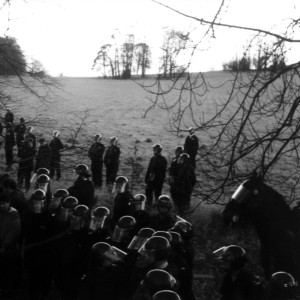 Between 1970 and 1980 the beginning of the failure of confidence in higher education in America began, focussing initially on the lack of data to support its success and worsening with the oil embargo and falling profits margins in education (Thelin, 2011). The federal government became involved in funding higher education in the form of student financial aid during this time (Thelin, 2011). The emergence of high profile college athletics, the growth of research funding and the soaring cost of education, in addition to the social unrest of the 1970s, further contributed to more troubling times for higher education in America (Thelin, 2011).
Between 1970 and 1980 the beginning of the failure of confidence in higher education in America began, focussing initially on the lack of data to support its success and worsening with the oil embargo and falling profits margins in education (Thelin, 2011). The federal government became involved in funding higher education in the form of student financial aid during this time (Thelin, 2011). The emergence of high profile college athletics, the growth of research funding and the soaring cost of education, in addition to the social unrest of the 1970s, further contributed to more troubling times for higher education in America (Thelin, 2011).
________________________________________________
References
Geiger, R.L. (2014). The history of American higher education: Learning and culture from the founding to world war II. Princeton University Press.
Thelin, J.R. (2011). A history of American higher education (2nd ed.). Baltimore, MD: The Johns Hopkins University Press.

